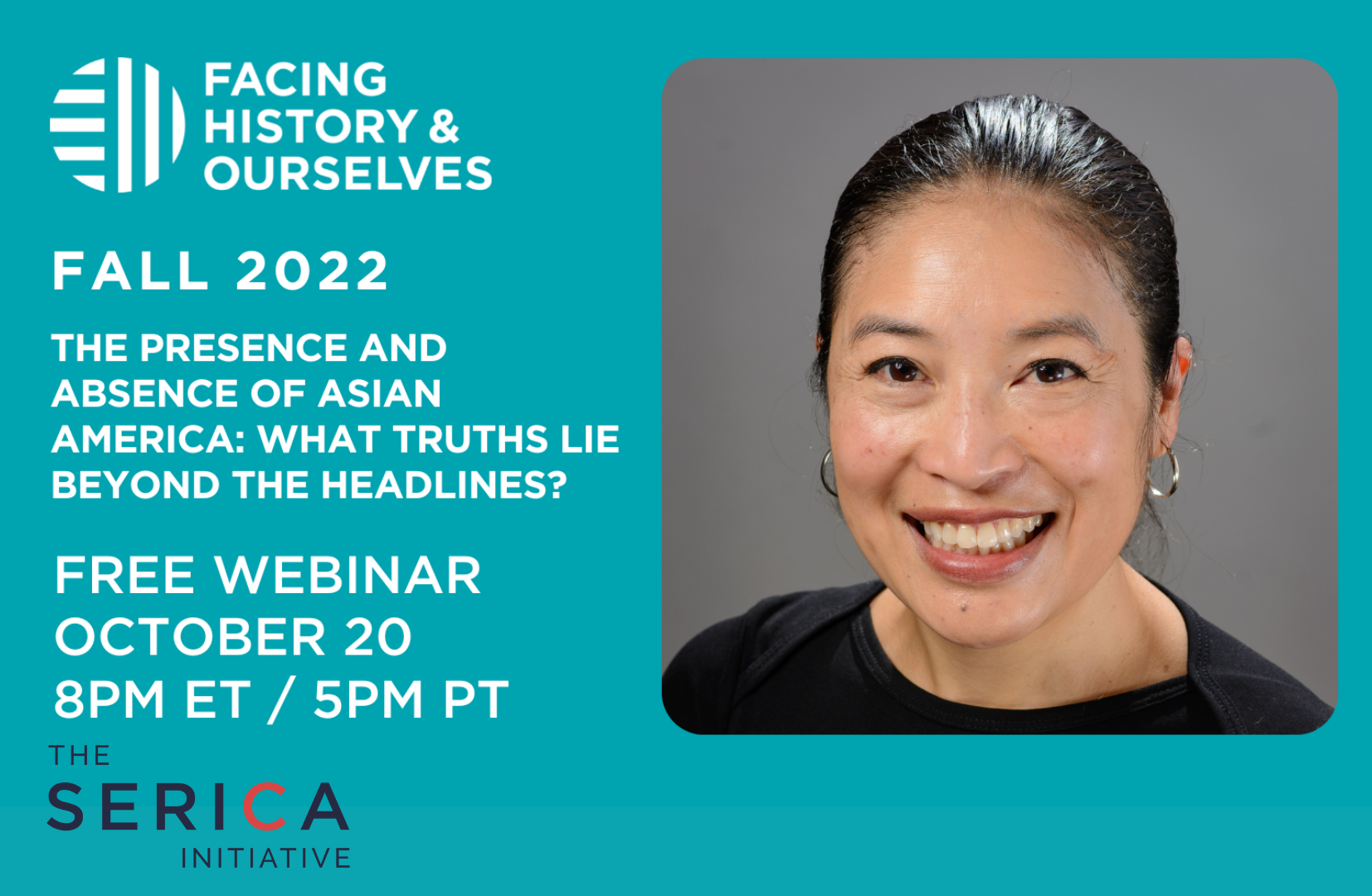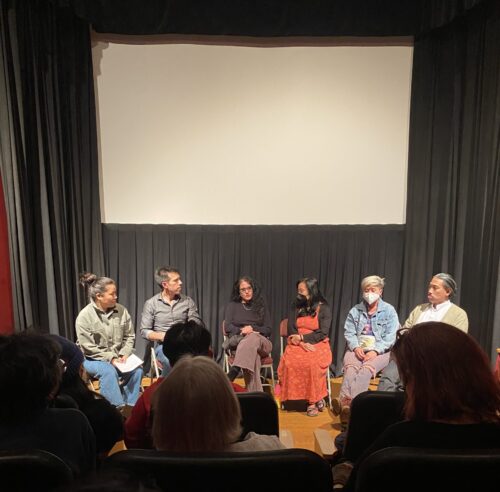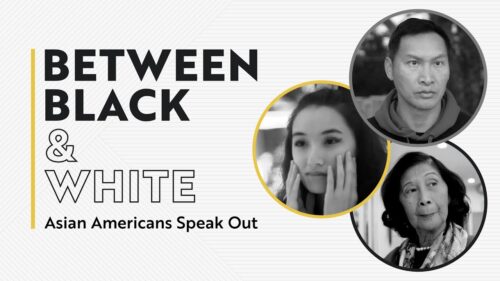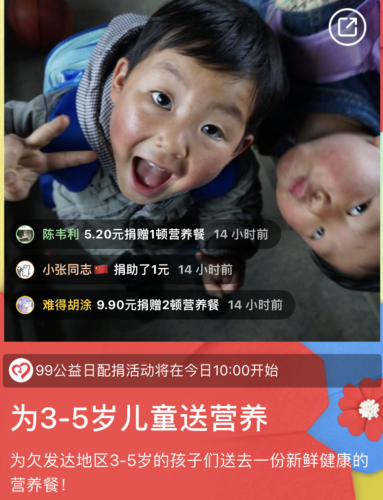The Presence and Absence of Asian America: What Truths Lie Beyond the Headlines
"Asian Americans are experiencing more violence. It must be addressed, and yet we can do that in a way that emphasizes solidarity with other groups. It’s also important now to be a little bit more thoughtful about what we share, and how we think about anti-Asian violence," says Janelle Wong, Asian American Studies scholar.

In celebration of our sister nonprofit, The Serica Initiative‘s, newest film collaboration with WNET/PBS, Between Black & White: Asian Americans Speak Out, we wanted to provide highlights from a 2022 conversation between Asian American Studies scholar and Asian American and Pacific Islander (AAPI) Research Fellow Dr. Janelle Wong and Facing History & Ourselves’ Jasmine Wong that covered data on, and responses to, anti-Asian American discrimination and violence. You can watch the full discussion here. (Interview has been edited for clarity and length).
Facing History & Ourselves: What does it mean for us to be thinking about all these different identities (East Asian, South Asian, Southeast Asian, Central Asian), but also to then layer on what it means in terms of immigration and generational status, class position, religion, gender? These differences have resulted in different experiences and histories. When we talk about these labels in these terms, how do you begin approaching that definition of Asian American?
It’s important to understand the roots of the term and the label Asian America. So there has always been this diversity. There was also a moment in the 1960s following the inspiration and leadership of the Black Power Movement in the United States to really try to empower a diverse group of people through common experiences. And so the label Asian American is the product of political organizing, political organizing around a category that is not scientific in any way, but is the category of history and social forces. And that is Asian America today. We are people with very different origins and with many, many different kinds of experiences. And we’re also in a community that’s in constant transformation. So that diversity is not static either. We are diverse, but we are also a community that is in such transformation.
FHAO: Is the trend of limiting Asian Americans to East Asians continuing into the present including with coverage of anti-Asian discrimination when we know that South Asians in particular have long been targeted by hate crimes? Is this something that we see in the classroom?
Curriculum is often developed over large tracts of time and the ways in which it is often falling behind what’s representative. Change in schooling and in classrooms happens often slowly. It’s really helpful to have this awareness that there is this bias. As educators, we have to constantly seek to share the stories that represent the students in front of us. But with the idea of discrimination and exclusion and how harmful it is, there are ways in which we have not yet prepared ourselves as educators to ensure that those kinds of moments don’t happen. We have to look at how we can better understand and address these stereotypes.
FHAO: How can we address these stereotypes?
Racial categories like Asian American are the product of social forces. And two of those forces are these enduring stereotypes: the forever foreigner stereotype, and the model minority stereotype. The forever foreigner stereotype is a belief that those with Asian features, whatever that is defined as at the moment are unfit for citizenship because they are so fundamentally culturally, physically, religiously, linguistically different that they cannot ever be part of the body politic. And this stereotype was both justified and perpetuated by laws, laws that related to immigration and naturalization up to the early 1900s. And yet the place of Asian Americans is really one of dual positions. So there were always exceptions to Asian exclusion.
FHAO: What exceptions are those?
The model minority. People see that Asian Americans in the United States have the highest levels of education of any racial group in the US. They say that’s because they care about education, but what that does is it erases the role of policies like in immigration that have actually driven this stereotype. Recruitment of Asian students into higher education laid the groundwork, in which Asian Americans naturally value education, they’re hard working, but they might not be great leaders or charismatic.
Asian Americans suffer from this stereotype because not everyone is high achieving and has educational access. That can either leave them without resources or be extremely hard on their mental health. And for other groups, this stereotype has been in many ways weaponized to serve as a way to say, well, this nonwhite group was able to attain educational and occupational status in the US. It deployed right after the civil rights protests of the 1960s in the US to discipline Black Americans and say, this other group has been able to make it without political protests, without demands on the state. The model minority stereotype has dominated and has been tenacious in the life of the Americas. Yet at the same time, the forever foreigner stereotype is always ready to be activated. The anti-Asian sentiment and violence that emerged after COVID is a pretty stark reminder that regardless of how model a minority we might be, we also are living a tenuous existence.
FHAO: What about the kinds of violence that Asian Americans have faced, and how Asian American journalists draw our attention to the multiple experiences of Asian Americans, especially as victims?
People have a pretty strong idea that there have been hate crimes against Asian Americans. I credit that to a lot of coverage and a lot of attention. But we have much more to understand about the current moment of attention to anti-Asian hate crimes. One of the things is that while the focus in the media is on physical assaults, many sources of data show that most of the hate incidents in the United States are not physical assault, but harassment and shunning. It’s important to recognize that violence takes place in many forms. If we just look at the headlines, then we see assaults. But if you think about other forms of violence, it’s important to pay attention to the fact that most students are going to be experiencing a range of different kinds of violence.
A point less covered in the media is that yes, Asian Americans are experiencing higher levels of racialized violence than before along with other groups. Asian Americans are experiencing more violence. It must be addressed, and yet we can do that in a way that emphasizes solidarity with other groups. It’s also important now to be a little bit more thoughtful about what we share, and how we think about anti-Asian violence. So what many of us are exposed to is this kind of image of a Black assailant against an Asian victim, usually elderly. But it’s important to recognize that most hate incidents are not physical assaults and that we need to be cognizant of the fact that crimes that feature an Asian American victim and crimes that involve Asian Americans can sometimes be subject to the same biases, racial biases as other kinds of crime coverage.
FHAO: Is our sharing of videos with Black assailants perpetuating biases as well? Are we seeing the ways in which the story we could tell is one of critical solidarity or one that just kind of goes along with the kind of biases that we see in the media over time?
That there is a weaponizing of Asian experiences or Asian experiences against Black communities. It’s incumbent on us to be thinking about ways in which those narratives are being perpetuated in the media to be really critical to be asking, what is it that we are not seeing? How do we understand this video? And really to come alongside both Asian and Black students and ask, how are you feeling? How are you responding? Then do some research. Who are the perpetrators? What is the violence? If we’re going to get at the roots of and address those roots of violence, we can’t be sitting at the surface. We have to be looking at ways in which racism is pervasive or the ways in which it feeds both of these violence against Black people as well as violence against Asians. We have to find common ground so that these kinds of stories don’t become weaponized within schools for further division within communities.
FHAO: If we look at everyday Americans through polling, then we see Asian Americans supporting affirmative action. Support is lower among Chinese Americans, but it is not nothing. There’s still a lot of support. This shows the potential for solidarity in Asian American communities and also the importance of telling our own stories. How do we balance these different narratives?
It is about having ownership over our own stories and making sure that there are a multitude of stories as well as holding tension to allow making space for those multiple narratives. We’re not siloing these histories, but rather we’re asking thematic questions that really get at universal questions around how groups are formed. What do we think about the kinds of choices and forces that shape encounters? What are those encounters? How do exchange or extraction, conflicts, migration, or imperialism, how does race impact any group? Then we can dive into particular stories that bring up these points. We invite other voices along to say, well, how have other groups experienced policies differently, recognizing that different groups of immigrants at different points in American history have faced different policy contexts?
FHAO: What are resources you can include in the classroom that invites multiple stories of identity and belonging?
My Part of the Story: Exploring Identity in the United States is a collection that really starts with the story of what it means to be American and really invites students to make meaning of what it means to be American. What does community mean? What does belonging mean? There’s also a great blog post that was co-written by Jared Kushida on complicating the term, Asian American. If that early part of the conversation around labels and identity is one that you want to bring into the classroom, you want to understand more around those roots of that political term, which is really compelling, that is a great article to turn to. If the story that you want to bring in is one that is a case study of exclusion, and you want to use that as that jumping-off point to talk about ways in which the forever foreigner and who is and who isn’t included in history, I recommend to you Farewell to Manzanar.
Additionally, the Teacher Academy at the University of California, Irvine is also sharing incredible conferences and work that feature Asian American voices, histories, stories, resources, and films. The Immigrant History Initiative seeks to highlight resources for communities who want to speak with and among each other and to build solidarity within, but also to highlight these kinds of policy conversations that are touchpoints for more universal stories around immigration in the United States. And then finally, the Asian American Education Project, which is a great place to continue building your resource library.
- Want to learn more? The Serica Initiative’s China Impact Newsletter is a monthly deep-dive into the trends, major players, and regulatory environment for philanthropic and nonprofit activity between the U.S. and China. Subscribe to the newsletter here.






